|
Grandma's Incredible
|
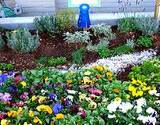 | 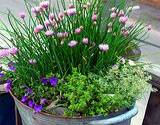 | 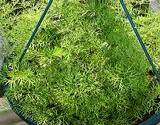 |
It's so easy to grow an edible flower garden, even if you've never been known to have a green thumb. Most edible flowers are easy to grow and take very little maintenance. The hardest part is getting the soil ready and starting your seedlings. Once you get the plants in the ground all you need is to remember to water and pull the weeds daily. Once you make a habit of doing this everyday it really only takes about 20 minutes a day.
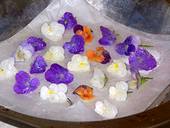 When planning your edible flower garden, why not add some herbs to the mix and you'll have a really nice variety of flowers, greens, and spices to make a great tasting salad and some special teas. Don't forget some flowers are excellent to make candy! Just wait until you have a dish of beautiful homemade candied flowers as a centerpiece for your next family picnic. Believe me, you'll be the center of attention the next time you're asked to bring a covered dish to the next family get-together.
When planning your edible flower garden, why not add some herbs to the mix and you'll have a really nice variety of flowers, greens, and spices to make a great tasting salad and some special teas. Don't forget some flowers are excellent to make candy! Just wait until you have a dish of beautiful homemade candied flowers as a centerpiece for your next family picnic. Believe me, you'll be the center of attention the next time you're asked to bring a covered dish to the next family get-together.
Click here to see some of Grandma's Favorite Edible Flower Recipes.
Planning Your Edible Flower Garden
 Planning your edible flower garden is necessary from the beginning because without the planning you're liable to end up with a messy looking garden. Most of all you need to be cautious you know the plants your planting are, without a doubt, edible flowers. It's important to make sure all your flowers are edible, if you choose the wrong kind they could be poisonous.
Planning your edible flower garden is necessary from the beginning because without the planning you're liable to end up with a messy looking garden. Most of all you need to be cautious you know the plants your planting are, without a doubt, edible flowers. It's important to make sure all your flowers are edible, if you choose the wrong kind they could be poisonous.
First it's important to think about your soil. Since you're planning on eating these flowers you want to make sure everything you put into the soil is organic. Never buy a potting soil or fertilizer that has chemicals in it. If you are planning on buying your plants from a nursery, make sure they only use organic soil and fertilizer. Starting your plants from seeds is sometimes the safest way to insure you're plants are organic. I like to start my plants in mid-spring on my windowsill in those little peat pots. Once the plants are ready for planting you can plant them into the ground or containers right in the peat pots since they break down in the soil very quickly.
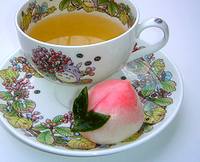 Decide early if you're planning on planting your plants into a small plot in your yard or plant them into containers. Or you could do both. Some edible flowers are better planted in the ground, like roses, since they come back year after year. I like to plant my perennials in the ground and my annuals in containers. Remember most herbs will spread and come back every year. That's why you have to be careful where you plant your herbs they have a tendency to take over a garden, especially mints. If possible plant your herbal mint plants around the border of your house since they deter rodents.
Decide early if you're planning on planting your plants into a small plot in your yard or plant them into containers. Or you could do both. Some edible flowers are better planted in the ground, like roses, since they come back year after year. I like to plant my perennials in the ground and my annuals in containers. Remember most herbs will spread and come back every year. That's why you have to be careful where you plant your herbs they have a tendency to take over a garden, especially mints. If possible plant your herbal mint plants around the border of your house since they deter rodents.
Let's start with a simple edible flower garden and herb garden.
10 Easy to grow Edible Flowers:
- Borage
- Calendula
- Chamomile
- Chives
- Lavender
- Nasturtium
- Antique Roses
- Sweet Violet
- Johnny-jump-ups
- Pansy
Here are some common herbs and vegetables whose leaves and seeds you probably already know. Try the flowers of these old favorites for a new taste sensation.
8 Easy to grow Edible Herb and Vegetable Flowers:
- Argula - Eruca Sativa, taste are nutty and smoky
- Basil - Ocimum basillcum, taste depending on the variety, mint or lemon
- Dill - Anethum gravealens, taste stronger than the leaves
- Lemon Balm - Melissa officinalis, taste lemony and sweet
- Mustard - Brassica spp., taste like hot mustard
- Oregano - Origanum spp., taste spicey and pungent
- Sage - Salvia officinalls, taste herbal spicy
- Squash or Pumpkin - Cucurbita spp., taste mild like the vegetable
Eating and Harvesting Edible Flowers
Eating
Introduce flowers into your diet gradually. If you have allergies, try one species at a time. Eat only the petals on most edible flowers. Violets, pansies, and Johnny-jump-ups are the exception you can eat the entire flower. Just before eating, remove interior flower parts such as the pistils and stamen. These can taste bitter, and the pollen can cause allergic reactions.
Flowers may taste different next year or at the end of the season. Weather, fertilization, and soil can all affect a flower's taste.
When cooking with flowers, match the flavors to your recipes. Sweet violas and floral-scented roses, for instance, bring an old-fashioned taste to cakes and cookies. Cucumber flavored borage and peppery nasturtiums add spicy zing to crisp salads or cold soups.
Harvest
For best flavor, harvest flowers at their peak in the early morning, after dew has evaporated. Avoid faded, wilted, or insect-damaged blossoms. Check carefully for hidden bugs.
Keep flowers cool after harvesting. Place long-stemmed flowers, like roses or lavender, in fresh cold water to keep them fresh. Store short-stemmed flowers between damp paper towels or in a plastic bag and refrigerate until ready to use. Wait to wash flowers until right before you eat them.
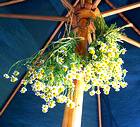 You can also make wonderful sachets out of the dried flowers. When fall arrives and you have an abundance of fragrant flowers left, instead of just letting them freeze up and wither away, just bundle them up and hang them in a cool place for several days, until the petals fall off. Just gather the petals up and put them in a plastic baggie then use them to make small sachets or pot-pourri. You can also make dried flower arrangements but that's another topic!
You can also make wonderful sachets out of the dried flowers. When fall arrives and you have an abundance of fragrant flowers left, instead of just letting them freeze up and wither away, just bundle them up and hang them in a cool place for several days, until the petals fall off. Just gather the petals up and put them in a plastic baggie then use them to make small sachets or pot-pourri. You can also make dried flower arrangements but that's another topic!
Play it Safe
Before you start picking your favorite blossoms, check a good reference book to make sure the flower isn't poisonous. Sometimes only a portion of the plant is safe to eat. Rhubarb stems are edible, for example, but not the flowers, leaves or roots. When in doubt, err on the side of caution.
Consider the source of your flowers, too. Gardening centers, nurseries, and florists often treat flowers with systemic pesticides not labeled for food crops. It's safest to consume only flowers grown specifically for culinary purposes. That's why growing your own edible flower garden is the best way to ensure a fresh, healthy supply.
DISCLAIMER:
The statements made here have not been approved by the Food and Drug Administration. These statements are not intended to diagnose, treat or cure or prevent any disease. This notice is required by the Federal Food, Drug and Cosmetic Act.
Leave Edible Flower Garden and Return to Grandma's Incredible Edible Flowers
Return to Grandma's Wisdom Home





